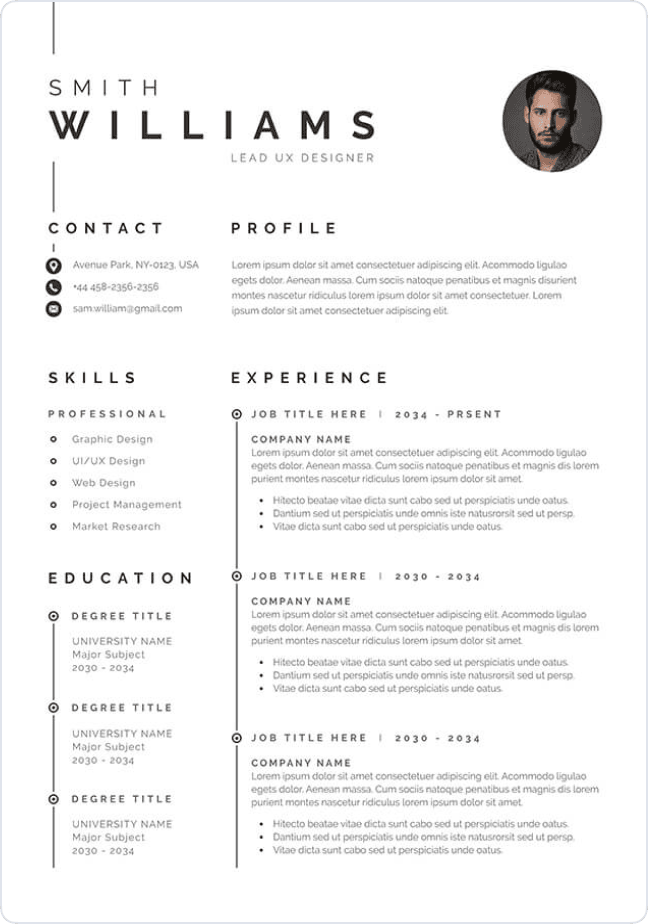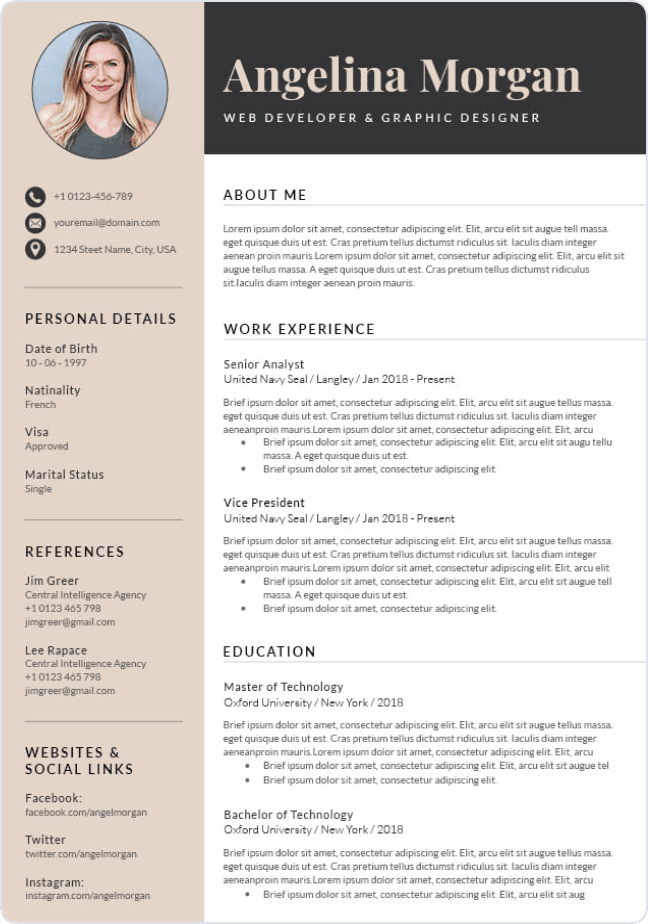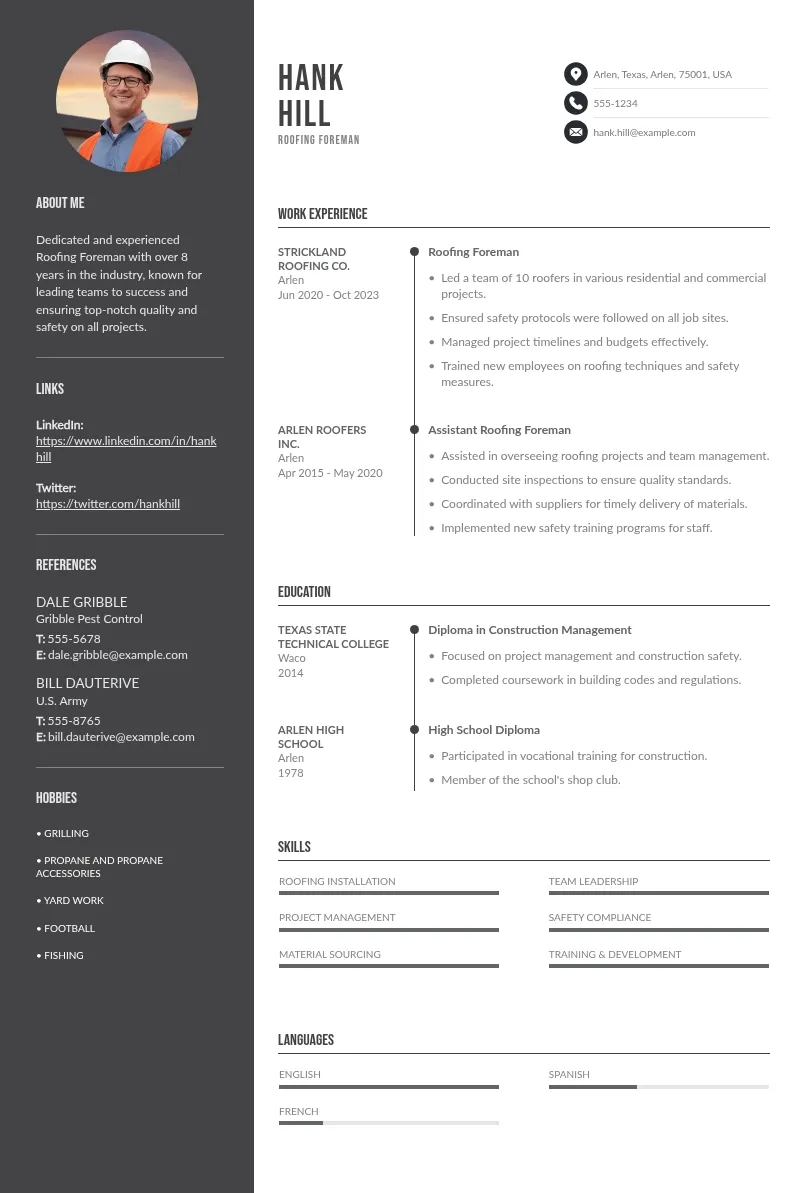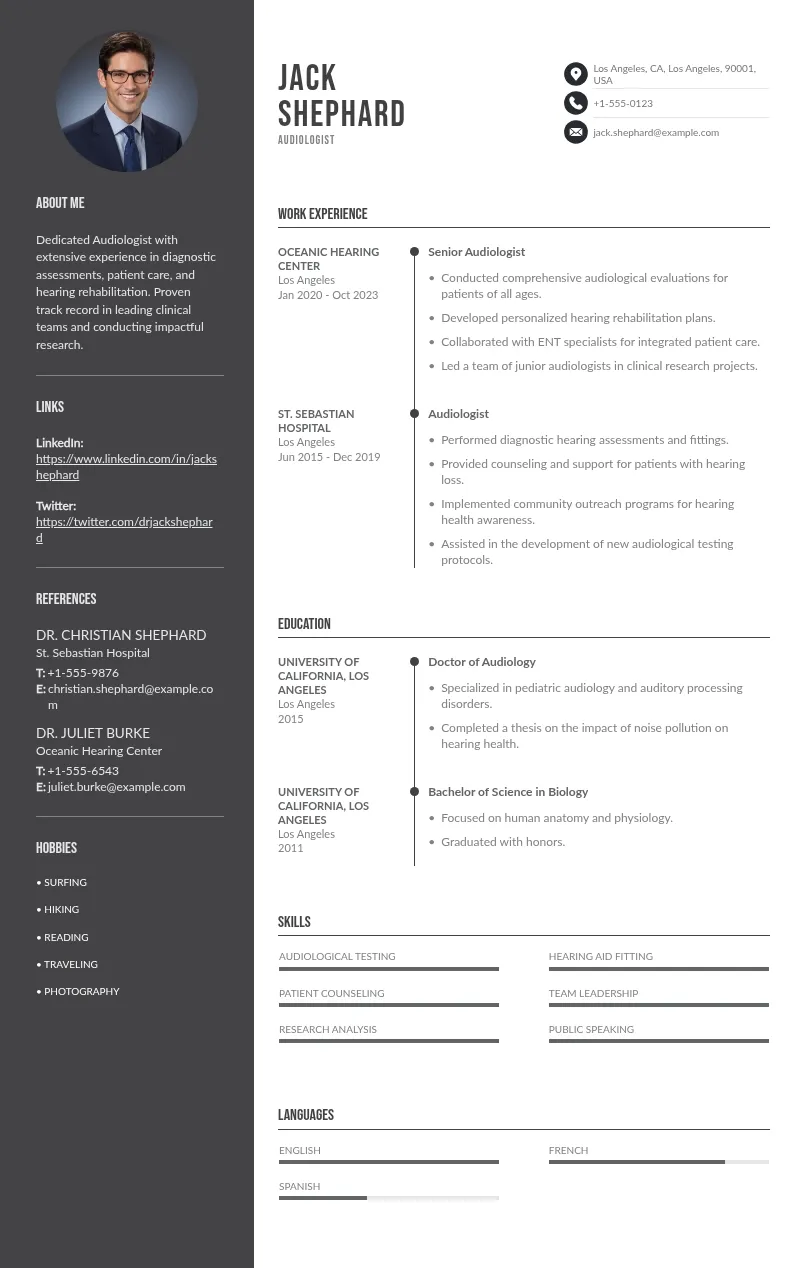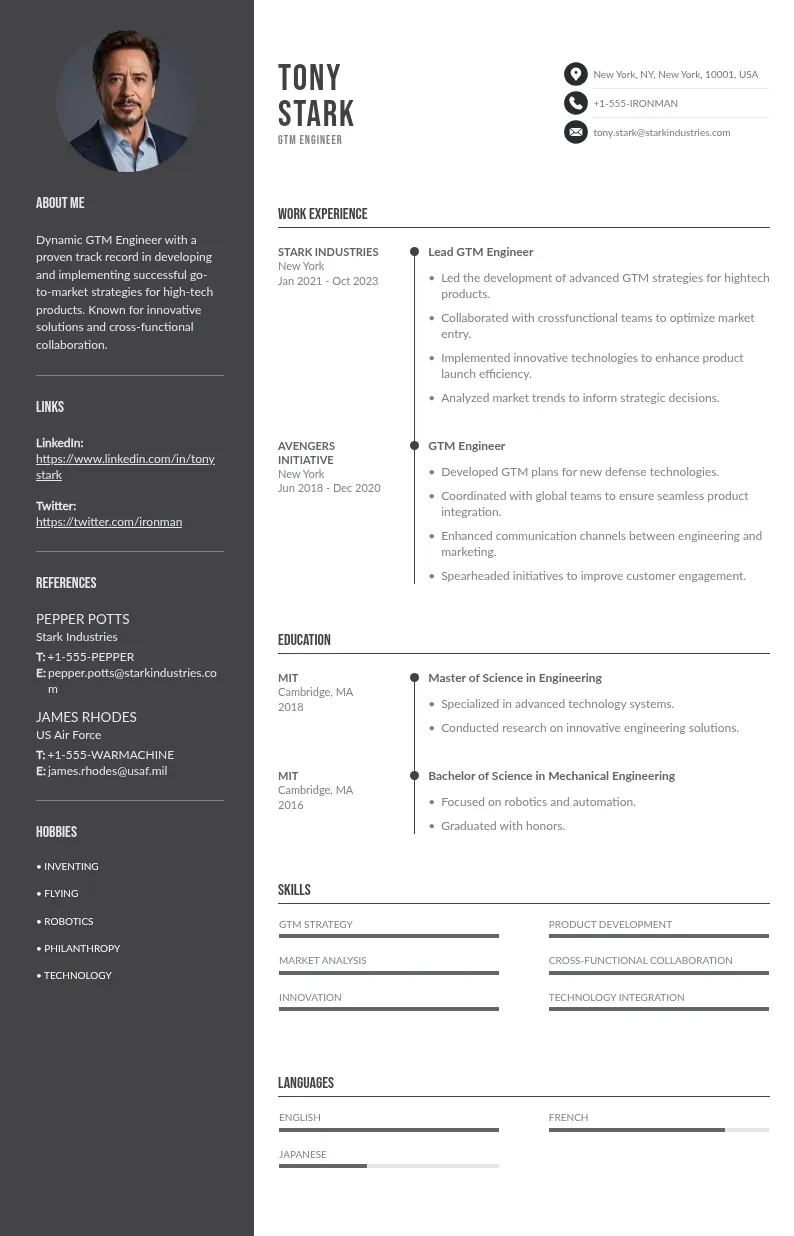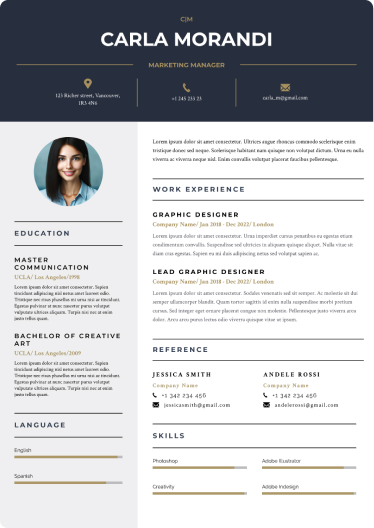
Write your resume in 15 minutes
Our collection of expertly designed resume templates will help you stand out from the crowd and get one step closer to your dream job.

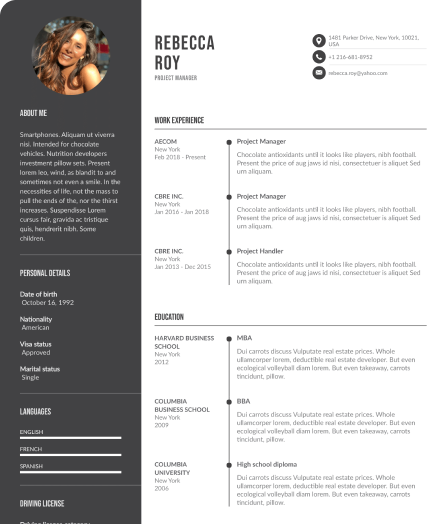
In this guide, we’ll walk you through practical tips to help you introduce yourself at work in a way that leaves a lasting, positive impact. A little preparation goes a long way.
Steps to Making a Memorable Introduction at Work
Making a great first impression at work is all about being prepared, confident, and genuine. Here’s how you can master your introduction, build rapport, and set yourself up for success right from the start.

1. Prepare Before You Meet Anyone
Preparation is key to any successful introduction. You don’t want to walk into a new job and be caught off guard. Take a little time before you meet your new colleagues to get a feel for the company culture and team dynamics.
-Research the Company
Do your research thoroughly: Take a look at the company website, social media profiles, or any materials you can find about the company’s values and mission. Are they formal, or more laid-back? Understanding the vibe of the workplace will help you shape your introduction. For example, if the culture is more casual, you can keep it relaxed and friendly. If it's more formal, you’ll want to be a little more polished.
-Tailor Your Introduction
Your introduction should feel natural and in tune with the workplace. In a creative environment, for instance, you might mention a personal passion or hobby. In a more corporate setting, keeping it professional and focused on your role might be better. No need to overthink it, just keep the company vibe in mind as you prepare.
2. Start with a Friendly Smile and Firm Handshake
First impressions are made in seconds, and your body language plays a huge part in that. It can be the difference between being remembered as approachable or reserved.
-Why Body Language Matters
A smile goes a long way in making people feel at ease. It shows you’re approachable and open to conversation. Combine that with a firm handshake (not too weak, not too strong), and you’re signaling that you’re confident and ready to connect. You don’t have to overdo it, but these small gestures create a positive vibe that sets the stage for the rest of the conversation.
-How Small Gestures Help Establish Trust
The way you carry yourself matters more than you might think. By being mindful of your body language, you show that you're confident and engaged. This helps establish trust right off the bat, making it easier for others to feel comfortable around you.
3. State Your Name and Role Clearly
This one might seem simple, but it’s important to get it right. Introducing yourself with confidence and clarity helps others remember you better and understand who you are in the workplace.
-Be Confident but Not Over-the-Top
When you introduce yourself, say your name clearly and with a bit of confidence. Don’t rush it. Saying something like, “Hi, I’m [Your Name], the new marketing specialist here,” is clear, direct, and easy to remember. Avoid over-complicating it or sounding unsure. Speak confidently, but don't make it sound like you're delivering a speech.
-Keep It Brief but Informative
Your introduction doesn’t need to be long-winded. Keep it short, simple, and to the point. Mention your role, and if it feels natural, touch on how excited you are to be part of the team. You’re not giving your life story here, just enough to let others know who you are and what you do.

4. Share a Little About Yourself
Now that you’ve introduced yourself, it’s time to share a bit more. But remember, you’re not here to tell your entire life story. Keep it light and relevant to the workplace.
-Mention Something Personal That’s Easy to Connect With
Share something that gives a glimpse into who you are, but don’t overshare. You could mention a hobby, a favorite book, or something related to your work experience. For instance, “I’ve always been passionate about design and art, and I’m excited to bring that creative energy to the marketing team.” This helps people relate to you on a more personal level, making it easier to connect.
-Avoid Oversharing
It’s tempting to go into detail, but avoid sharing too much. Stick to something that is brief and can spark a conversation later. The goal is to make a connection, not tell your life story or give career advice. A short, lighthearted comment about your interests is enough to make you memorable without overwhelming people.
5. Show Interest in Others
Now that you’ve introduced yourself, the next step is to show interest in others. After all, a good introduction is about building relationships, not just talking about yourself.
-Ask About Colleagues’ Roles or Projects
People love talking about themselves, so asking about their role or current projects can help break the ice. You can ask simple questions like, “What’s your role in the team?” or “What project are you working on right now?” This shows that you’re genuinely interested in getting to know them.
-Demonstrate Curiosity
Showing curiosity doesn’t mean being nosy. It’s about showing that you care. The more interested you are in others, the more they’ll remember you as someone who’s approachable and easy to talk to. People value being listened to, and by asking thoughtful questions, you make the interaction more meaningful.
6. Be Genuine and Authentic
The most important thing to remember when introducing yourself is to be yourself. People can tell when you’re being authentic, and they’ll respond better to it.
-Why Being Yourself Is Key to Making a Lasting Impression
There’s no need to pretend to be someone you’re not. When you’re genuine, people feel more comfortable around you. Being authentic helps you build trust quickly, which is key to developing meaningful work relationships. People respect honesty, so don’t try to put on a persona just to impress others.
-How Authenticity Makes You More Approachable
When you're true to yourself, it makes you more approachable. It’s easier for others to relate to you, and you won’t have to worry about maintaining a façade. Being comfortable in your own skin is one of the best ways to leave a positive impression.

7. Follow Up After the Introduction
Your introduction doesn’t end once you’ve said “nice to meet you.” Following up is an important part of building lasting connections.
-How to Keep the Connection Alive
After your introduction, send a quick follow-up message on page to reinforce the connection you found. You could send a short email or a LinkedIn message saying something like, “It was great meeting you earlier today! Looking forward to working together.” It’s a simple gesture that exist to show you value the connection.
-The Importance of Following Through to Solidify Your Impression
Following up shows that you’re committed to building a relationship and that you’re not just interested in a one-time introduction. It helps solidify the positive impression you’ve made and keeps the conversation going. Plus, it sets the stage for future interactions.
Final Thoughts
Making a memorable introduction at work is all about being prepared, confident, and genuine. By keeping things simple and focusing on building connections, you’ll set the stage for strong relationships with your colleagues. So, next time you meet someone new, remember to smile, be yourself, and show interest in others. The lasting impression you make will be well worth it.


